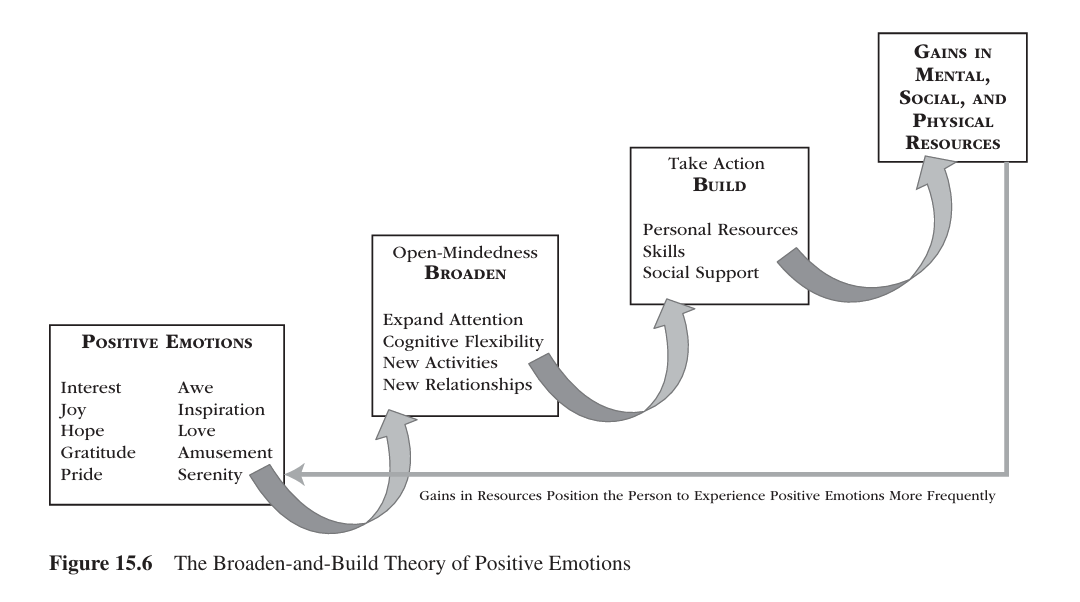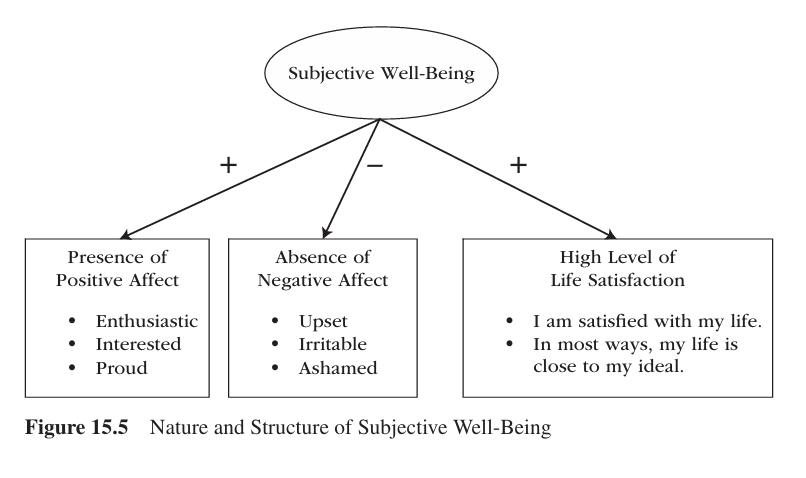Introduction
Positive emotions play a fundamental role in human well-being, influencing cognitive processes, social interactions, and overall life satisfaction. Unlike transient pleasurable experiences, positive emotions contribute to long-term psychological growth and resilience (Fredrickson, 2001).
Reeve (2017) defines positive emotions as affective states that arise from favorable interpretations of experiences, leading to feelings of happiness, contentment, and enthusiasm.
Read More- Positive Psychology Interventions
Understanding Positive Emotions
Positive emotions, such as joy, gratitude, serenity, interest, and love, differ from transient moods and specific affective states. According to Fredrickson’s (1998) broaden-and-build theory, positive emotions expand individuals’ cognitive and behavioral repertoires, enabling them to develop lasting personal resources, including social connections and coping skills. These emotions not only enhance immediate well-being but also contribute to an individual’s ability to handle future challenges.

Broaden and Built Theory
Read More- Broaden and Built Theory
Biological Basis of Positive Emotions
Positive emotions originate from complex interactions between neural circuits, neurotransmitters, and hormonal systems in the brain. Several key structures and chemical processes contribute to the experience and regulation of positive emotions:
1. The Role of the Brain
- Prefrontal Cortex: The left prefrontal cortex is associated with positive affect and approach-oriented behaviors. Research indicates that individuals with higher activity in the left prefrontal cortex experience greater levels of happiness and optimism (Davidson, 2004).
- Amygdala: While traditionally linked to processing negative emotions like fear, the amygdala also plays a role in encoding positive experiences and regulating emotional intensity (Murray & Fellows, 2021).
- Ventral Striatum and Nucleus Accumbens: These regions are key components of the brain’s reward system. Activation in these areas is linked to pleasurable experiences, motivation, and reinforcement learning (Berridge & Kringelbach, 2015).
2. Neurotransmitters and Hormones
- Dopamine: Often referred to as the “feel-good” neurotransmitter, dopamine plays a crucial role in reward processing, motivation, and pleasure. Elevated dopamine levels are associated with states of happiness and anticipation of rewards (Wise, 2004).
- Serotonin: This neurotransmitter contributes to mood regulation and emotional stability. Increased serotonin levels, often enhanced through social interactions and physical activity, are linked to feelings of well-being (Young, 2007).
- Endorphins: These natural opioids are released during pleasurable activities, such as laughter and exercise, promoting a sense of euphoria and reducing pain perception (Stein et al., 1990).
- Oxytocin: Often called the “love hormone,” oxytocin enhances social bonding, trust, and positive social interactions, particularly in close relationships (Carter, 1998).

Nature and Structure of Subjective Well-Being
Benefits of Positive Emotions
Research indicates that positive emotions have various psychological, physiological, and social benefits:
- Enhanced Cognitive Functioning: Positive affect fosters cognitive flexibility and creative problem-solving (Isen, Daubman, & Nowicki, 1987).
- Increased Resilience: Positive emotions contribute to resilience by buffering against stress and facilitating adaptive coping strategies (Tugade & Fredrickson, 2004).
- Improved Social Bonds: Individuals experiencing positive emotions tend to engage in more prosocial behaviors, fostering stronger interpersonal relationships (Isen & Levin, 1972).
- Physical Health Benefits: Positive affect is associated with improved immune function, cardiovascular health, and longevity (Diener & Chan, 2011).
Interventions to Enhance Positive Emotions
Several evidence-based interventions can promote positive emotions in daily life-

Happiness Exercises
- Gratitude Practices: Expressing gratitude, such as writing gratitude letters or keeping a gratitude journal, has been shown to increase well-being and life satisfaction (Emmons & McCullough, 2003).
- Mindfulness and Meditation: Mindfulness practices, including loving-kindness meditation, enhance positive affect by fostering present-moment awareness and self-compassion (Fredrickson et al., 2008).
- Acts of Kindness: Engaging in altruistic behaviors, such as helping strangers or volunteering, boosts happiness and fosters social connections (Lyubomirsky, Sheldon, & Schkade, 2005).
- Positive Reappraisal: Reframing negative experiences in a constructive way enhances emotional regulation and overall well-being (Troy, Wilhelm, Shallcross, & Mauss, 2010).
- Engagement in Flow Activities: Participating in activities that match skill levels with challenges, such as sports or artistic pursuits, leads to experiences of flow, which enhance happiness (Csikszentmihalyi, 1990).
Conclusion
Positive emotions contribute significantly to overall well-being by enhancing cognitive flexibility, social bonds, resilience, and physical health. The biological underpinnings of positive emotions, including brain structures, neurotransmitters, and hormonal activity, highlight their fundamental role in human flourishing. Interventions such as gratitude practices, mindfulness, acts of kindness, positive reappraisal, and engagement in flow activities effectively cultivate these emotions. Integrating these interventions into daily life can lead to sustained psychological growth and improved quality of life.
References
Berridge, K. C., & Kringelbach, M. L. (2015). Pleasure systems in the brain. Neuron, 86(3), 646-664.
Carter, C. S. (1998). Neuroendocrine perspectives on social attachment and love. Psychoneuroendocrinology, 23(8), 779-818.
Csikszentmihalyi, M. (1990). Flow: The psychology of optimal experience. Harper & Row.
Davidson, R. J. (2004). Well-being and affective style: Neural substrates and biobehavioural correlates. Philosophical Transactions of the Royal Society B: Biological Sciences, 359(1449), 1395-1411.
Diener, E., & Chan, M. Y. (2011). Happy people live longer: Subjective well-being contributes to health and longevity. Applied Psychology: Health and Well-Being, 3(1), 1-43.
Emmons, R. A., & McCullough, M. E. (2003). Counting blessings versus burdens: An experimental investigation of gratitude and subjective well-being in daily life. Journal of Personality and Social Psychology, 84(2), 377-389.
Fredrickson, B. L. (1998). What good are positive emotions? Review of General Psychology, 2(3), 300-319.
Fredrickson, B. L. (2001). The role of positive emotions in positive psychology: The broaden-and-build theory of positive emotions. American Psychologist, 56(3), 218-226.
Fredrickson, B. L., Cohn, M. A., Coffey, K. A., Pek, J., & Finkel, S. M. (2008). Open hearts build lives: Positive emotions, induced through loving-kindness meditation, build consequential personal resources. Journal of Personality and Social Psychology, 95(5), 1045-1062.
Isen, A. M., Daubman, K. A., & Nowicki, G. P. (1987). Positive affect facilitates creative problem solving. Journal of Personality and Social Psychology, 52(6), 1122-1131.
Isen, A. M., & Levin, P. F. (1972). Effect of feeling good on helping: Cookies and kindness. Journal of Personality and Social Psychology, 21(3), 384-388.
Murray, E. A., & Fellows, L. K. (2021). The human amygdala and reward. Annual Review of Neuroscience, 44, 205-227.
Reeve, J. (2017). Understanding motivation and emotion (7th ed.). Wiley.
Stein, C., Schafer, M., & Machelska, H. (1990). Endorphins and pain control. Trends in Neurosciences, 13(10), 450-455.
Tugade, M. M., & Fredrickson, B. L. (2004). Resilient individuals use positive emotions to bounce back from negative emotional experiences. Journal of Personality and Social Psychology, 86(2), 320-333.
Subscribe to Careershodh
Get the latest updates and insights.
Join 16,420 other subscribers!
Niwlikar, B. A. (2025, April 14). Positive Emotions and 5 Important Interventions to Amplify Them. Careershodh. https://www.careershodh.com/positive-emotions-and-interventions/
